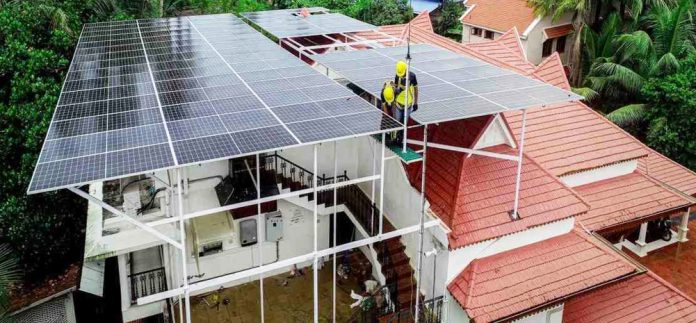Net Energy Metering (NEM) is an enabling policy mechanism, which is designed to promote investment in Renewable Energy sector. Net-metered Photovoltaic (PV) Solar applications have becoming very popular amongst residential, Commercial and Industrial sector customers. NEM works through retail tariffs, thus allowing retail customers to offset their electricity bills via utilization of their privately-owned generating system and selling their surplus generation to the Distribution Companies. NEM usually uses a single, bi-directional meter and can measure current flowing in both directions.
In 2022, National Electric Power Regulatory Authority (NEPRA) initiated the process of amendments to the Alternative & Renewable Energy Distributed Generation and Net Metering Regulations, 2015 and proposed the following amendment, In Sub-Regulation 5 of Regulation 14 of the Regulations, the word ’National Average Power Purchase Price (NAPPP)be replaced with ‘National Average Energy Purchase Price (NAEPP)’. Now, it is important to understand how much they will save from Net Metering, here is a simple formula to calculate your savings,
Solar Panels Installed (Watts) x 4 (Units Per Day) x Electricity Unit Rate (Rs.) Suppose installing 1KW (250-Watt x 4 pcs) Solar Panels (Tier 1 Brand) will generate consumers with an average of 4,000 Watts per day, this equals to savings of 4 electricity units per day on average.
Similarly installing 10 KW Solar Panels will generate consumers an average of 40,000 Watts per day, this equals to savings of 40 electricity units per day on the average. However Solar Power Generation is likely to increase during summers when we receive ample amount of sunshine.
Now in Pakistan, something has happened that others have experienced, Pakistan had targeted 1,920MW of rooftop solar capacity by the year 2026, according to its latest Indicative Generation Capacity Expansion Plan. In reality, the nation has crossed that threshold last year. Now government want to apply the brakes, because, according to the power bureaucracy, this rapid growth in rooftop solar is creating costs that have to be passed on to poorer segments of the population, who don’t have the luxury to go the rooftop solar route because they have single-phase meters and the technology does not yet work with that. Additionally, they have very limited rooftop space they can use for the purpose.
“The current trend of installation of solar system with net metering across the country has mis-balanced government’s plan to pay capacity charges from the consumers as rich segment is converting it to net metering,” the power bureaucracy is contemplating rationalization of redemption rates of net metering electricity to Rs 11 per unit from current rates of Rs 21 per unit, now There is an impression in the Power Division that whatever advantage the consumers could get they have availed it and now damage has begun in the country’s power sector. On one hand government does not want to discourage solarization in the country, but on other hand they are cutting down the per unit price. The Power Division argues that consumers have installed solar system for their own consumption and rates of additional generation should be fixed on the affordability of the receiver i.e. Discos.
The process of amendment in the Regulations was initiated keeping in view increase in National Average Power Purchase Price (NAPPP). The amendment in Regulations was published in newspapers for eliciting public opinion for a period of 30 days. The public/consumers, during the hearing, strongly opposed the proposed amendments and argued that electricity through net metering is one of the most efficient methods in incurring low distribution losses, with no investment for distribution infrastructure and this proposal in the Regulation would discourage net metering/solar installation. The Authority sat on the decision for several months due to pressure from the then government and later announced that it had carefully reviewed the submissions of the stakeholders made during the hearing & in writing and is also cognizant of the vision of the government for induction of cheap and clean renewable energy into the system.
Net metering is predominantly based on the concept of minimizing the electricity cost through rooftop solar self-generation for self-consumption and not for commercial sale, DISCOs have to maintain Grid & Generation Capacities for the Net Metering Consumers during non-solar hours as well. However, at the same time, the economic benefits of net metering in terms of displacement of costlier electricity, savings of foreign exchange and incurring minimal losses, cannot be ignored. Moreover, the quantum of net metering units, at present is very low, ie, below 1% of the total energy purchased by DISCOs.
The big problem in Pakistan’s power bureaucracy now is that the state insists on setting the price of electricity manually, using outmoded formulae. In large-scale thermal power plants, for example, they still use what is called ‘cost plus” pricing, where the regulator actually looks at each cost item in the prospective power plant and decides what their total costs are and how much margin they should be allowed. This is partly because nobody is willing to invest in Pakistan on a large scale if their returns are not guaranteed. And the big reason for that is the government of Pakistan has a lousy reputation when it comes to delivering on its commitments.
This exclusive research article has been published in Automark Magazine’s June-2024 printed edition too.
